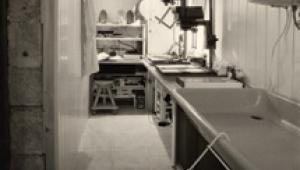The Darkroom
Processing Medium Format C 41 Film
| Processing with C-41 is relatively
easy to perform. The chemicals involved are not overly sensitive or
difficult to work with. In fact, even the time and temperatures involved
are not real critical. If the time and/or temperature are accidentally
allowed to vary a little, the resulting negatives will most likely still
be within a range that can be correctly printed by adjusting the exposure/filter-pack
on the enlarger. However, if you want negatives that are absolutely
correct and consistent, then it is important to be equally correct and
consistent in your processing methods. |
- Log in or register to post comments

















































